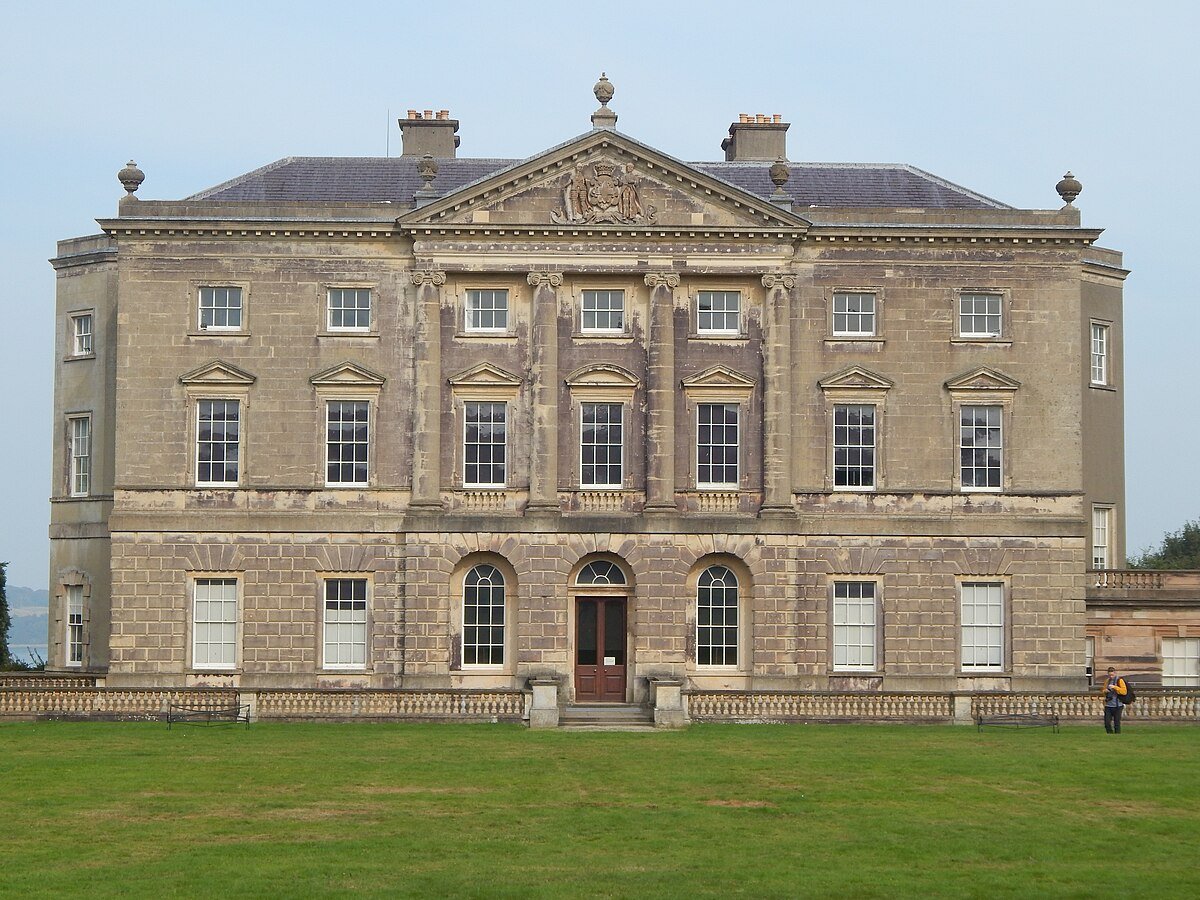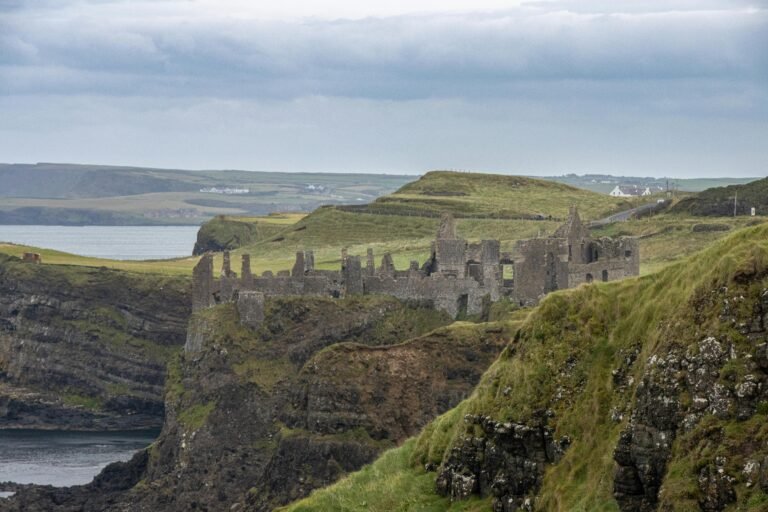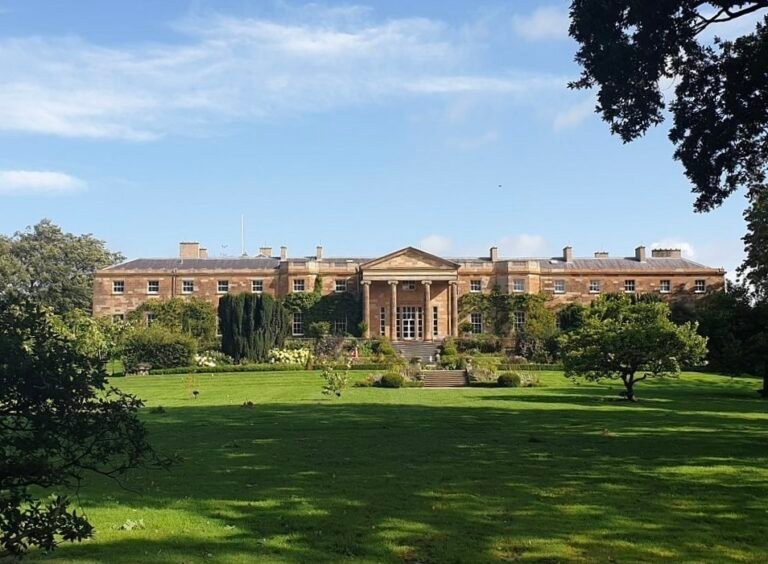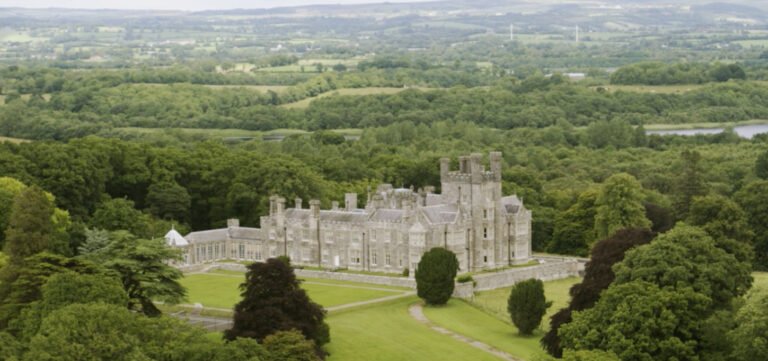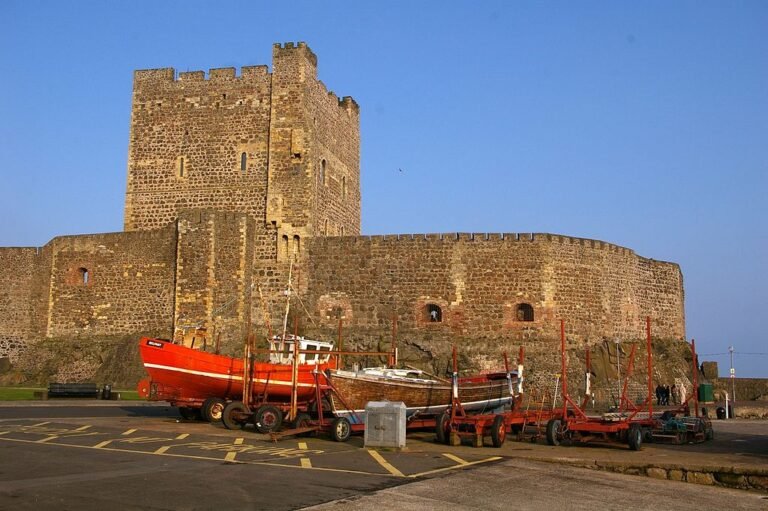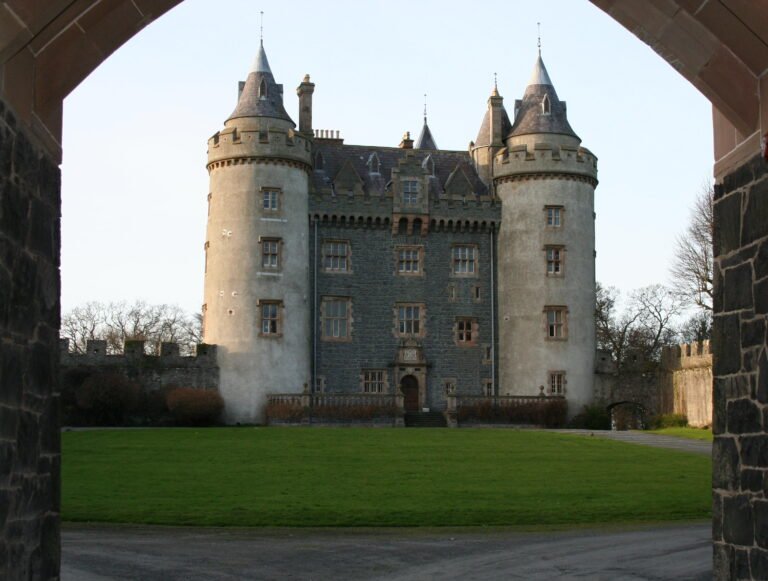Castle Ward: Exploring the Unusual 18th‑Century Estate in County Down
A House of Two Styles by Strangford Lough
Castle Ward is an extraordinary 18th‑century mansion perched near Strangford in County Down, Northern Ireland. What makes it truly unique is its dual architectural design, one face is elegant Palladian‑Georgian, the other romantic Gothic, reflecting the distinct tastes of Bernard Ward, later Viscount Bangor, and his wife, Lady Ann Bligh.
Set within a vast 332‑hectare walled demesne (about 820 acres) that rolls down to the shores of placid Strangford Lough, the estate weaves heritage architecture with sweeping parkland, historic outbuildings and imaginative gardens.
Historical Story: From Carrick na Sheannagh to a Dual‑Faced Mansion
The estate’s story begins in the 16th century, when it was known as Carrick na Sheannagh and owned by the Earls of Kildare. In 1570, Bernard Ward’s family acquired it and renamed it Castle Ward. Over time, successive Wards shifted and replaced earlier structures until the remarkable mansion we know today took shape in the 1760s.
Construction began around 1762 and was completed by 1772, built of elegant Bath stone, though the architect remains unidentified, it’s speculated to have been someone from the Bristol school like James Bridges or Thomas Paty.
Its dual façade with a classical front and a Gothic rear visually speaks to two design worlds colliding. Internally, the division continues: neoclassical rooms flow into Gothic chambers, showing how personal taste influenced architecture in the Georgian era.
Architectural and Cultural Highlights
Georgian Front: Symmetry & Palladian Order
The classical side is balanced and restrained, with sash windows and a columned pediment an embodiment of Georgian clarity and elegance.
Gothic Rear: Romantic Flourish and Drama
Opposite, the Gothic façade bristles with battlements, pointed windows, and romantic detailing, Lady Ann Bligh’s signature aesthetic.
Interior Splendor
Inside, visitors can explore lavish plasterwork, richly furnished rooms, and subtle transitions between styles. Each side narrates its own aesthetic preference.
Historic Features Beyond the House
The estate also includes a fortified tower house, a defensive relic dating to 1610, and once-functioning outbuildings like a cornmill, sawmill, Victorian laundry, and a theatre.
Gardens, Grounds, and Countryside Wanderings
Landscaped Pleasure Grounds
The estate’s gardens reflect both 17th–18th‑century layouts and Victorian-era features. Highlights include a Victorian Sunken Garden with restored parterres, the Palladian Water Temple, a rockery, a pinetum, a fernery, and a serene winter garden filled with seasonal charm.
Extensive Trails and Scenic Walks
Meandering pathways stretch across woodlands, lawns, and shorelines. The lough‑side walk offers views of the water, occasional follies, and opportunities for bird‑watching, plus guided and volunteer‑led walks uncover more estate secrets.
Living History and Seasonal Activities
Castle Ward regularly hosts living history days, cornmill demonstrations, artist workshops, and volunteer‑guided walks, bringing estate life to vivid life.
Visiting Castle Ward: Practical Travel Tips
Getting There
Castle Ward lies about 7 miles from Downpatrick and 1.5 miles from Strangford Village, roughly a 45-minute drive from Belfast.
Opening Hours & Tours
- Grounds open from 10:00 to 18:00.
- Garden: open 10:00 to 16:00.
- House: open from 11:00 to 16:00, with last entry typically around 15:45.
Tickets & Access
Entry is free for National Trust members. For others, standard admission applies(Adult: £14, Children: £7). House tours may require booking in advance, especially for guided sessions.
Facilities
There’s a stableyard tea‑room, a second‑hand bookshop, a shop, and seasonal events like cornmill demonstrations and art workshops.
The estate is generally accessible, though some historic areas may challenge mobility needs. Staff are happy to advise.
With Children, Pets, or Photography in Mind
Castle Ward is family-friendly: children enjoy the maze, gardens, and open spaces. It’s also dog‑friendly, with a dedicated dog run and most trails welcoming pets on a lead.
Photographers will find early morning or late afternoon light particularly magical, especially across the contrasting façades and garden features.
Immersive Sample Itineraries
Itinerary 1: Half‑Day Heritage & Nature Escape
- 10:00 – Stroll across the lough‑side grounds and gardens.
- 10:30 – Explore the house via self‑guided or guided tour.
- 11:30 – Meander through the Sunken Garden, rockery, and fernery.
- 12:00 – Enjoy tea in the Stableyard café or picnic near the river.
- 12:30 – Optional: walk along the lough edge or visit nearby Strangford Village.
Itinerary 2: Full‑Day Heritage Loop with Garden and Coastal Highlights
- 10:00 – Arrive and explore gardens, grounds, and the house.
- 11:30 – Participate in a workshop or see the cornmill in action.
- 12:30 – Lunch in the café or local tearoom.
- 13:30 – Trail walk toward the lough shore or book a guided walk.
- 14:30 – Drive or ferry to Portaferry; explore the quay and local crafts.
- 15:30 – Visit Mount Stewart or another National Trust garden nearby.
- 17:00 – Return via scenic route, perhaps stopping at a village pub for dinner.
Where to Stay and Dine Nearby
Places to Stay
- Castle Ward Caravan Park: Offers tent pitches, hardstanding for motorhomes, and family or standard pods.
- Holiday Cottages on Estate: Potter’s Cottage and Downpatrick Gate Lodge.
- B&Bs in Strangford or Portaferry: Quaint and locally run. Downpatrick also offers mid‑range hotels.
Dining Options
- Stableyard café: Convenient and light fare.
- Strangford Village: Quayside cafés and pubs offering seafood.
- Portaferry: More café options with scenic views and coastal charm.
Special Events & Seasonal Experiences
- Summer of Play: Lawn games, quests, and medieval fun.
- Living history days, art workshops, and cornmill demos.
- Gardens by season: Spring bulbs, summer bloom, autumn foliage, winter stillness.
Game of Thrones Connection & Cultural Resonance
Castle Ward’s farmyard and surrounding grounds served as the iconic Winterfell in Season 1 of Game of Thrones. Key scenes, including the Battle of Baelor and Jon Snow’s archery range, were filmed here.
Broader UK Travel Themes
Castle Ward connects to broader UK travel themes:
- Heritage estates with personality
- Film tourism
- Garden restoration
- Architecture influenced by personal stories
Final Thoughts
Castle Ward invites exploration, discovery, and imagination. With welcoming gardens, trails, seasonal programming, and even a film‑set legacy, it’s suited to families, couples, and solo travellers seeking history, landscapes, or a taste of fantasy.
FAQs – Castle Ward
What facilities are available at Castle Ward?
Visitors can enjoy a cosy tea-room (dog‑friendly), a shop, and a second‑hand bookshop located in the historic Stableyard.
Are guided tours offered, and when?
Yes – guided house tours are available every hour from February to May on Mondays, Thursdays, and Fridays starting at 11:00, with the last tour at 15:00. On weekends (Saturday and Sunday), self-guided access is open from 11:00 to 16:00 with no ticket required.
Is Castle Ward accessible to visitors with disabilities or additional needs?
Yes – castle staff offer wheelchairs, mobility scooters, sensory backpacks, and general accessibility support. For specific requirements, it’s recommended to contact the estate directly or check their AccessAble overview.
Can I bring my dog to Castle Ward?
Absolutely – dogs are welcome on leads throughout most of the estate, and there’s even a dog-run exercise field where they can roam freely and safely.
What can I do besides visiting the house?
Beyond the house, visitors can explore beautiful gardens, walking and cycling trails, a woodland playground, and the Secret Shore Nature Trail. The estate also offers 32 km of varied paths through parkland, riverside, and woodlands.
Is Castle Ward a filming location – for what?
Yes – Castle Ward’s farmyard and surrounding grounds were used as the filming location for Winterfell in Game of Thrones (Season 1), featuring iconic scenes like the Whispering Wood and Robb Stark’s camp.
